Puerto Rico Wildlife: 9 Animals You Can See in El Yunque National Forest
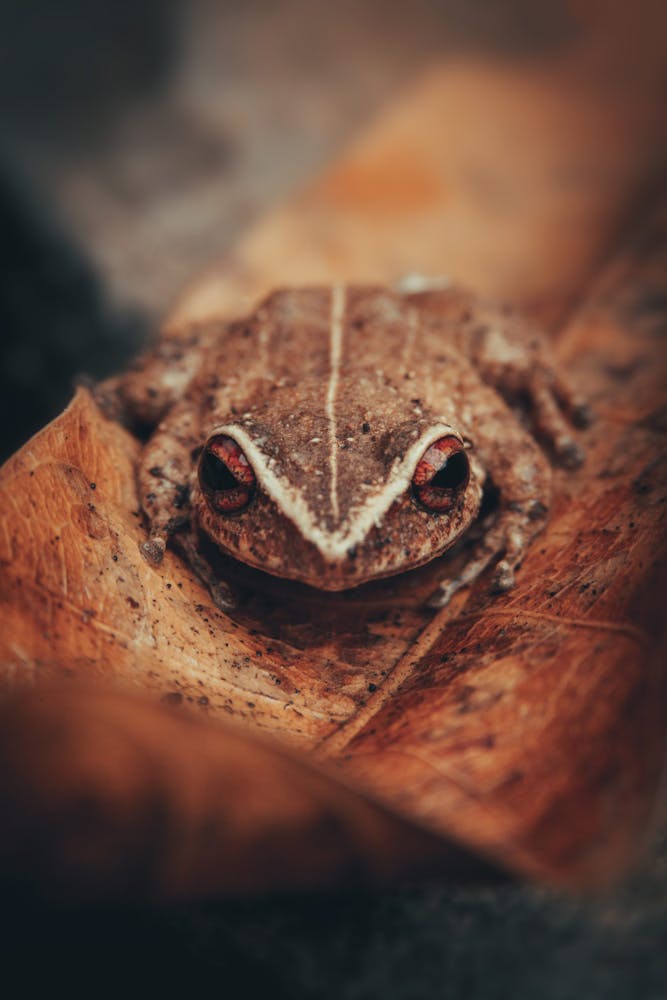
El Yunque National Forest is one of the can’t-miss spots to visit during your vacation to Puerto Rico. It’s the only rainforest in the U.S. National Forest Service, and it offers a great opportunity to see unique wildlife, amazing waterfalls, and unforgettable views.
When you think of a rainforest, you might imagine wildlife such as jaguars and monkeys, but you won’t find those among El Yunque’s animals. The island of Puerto Rico was formed from an underground volcano, so while the island boasts a lot of aquatic wildlife, birds, and amphibians, it doesn’t have many endemic mammals. Colonization brought many new species to the island, and through human development and the effects of invasive species, many of Puerto Rico’s endemic species are endangered or extinct.
The rainforest, however, is still full of vibrant and fascinating wildlife to discover, including colorful birds, impressive reptiles, and of course, the famous coquí. Here are some of the Puerto Rico animals you might encounter as you explore El Yunque.
Birds
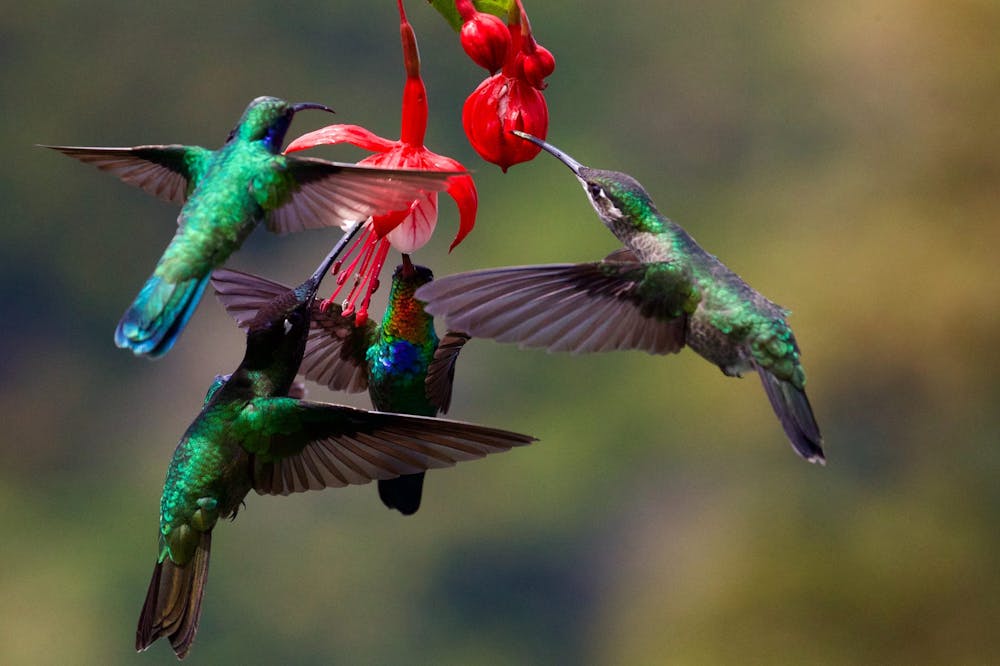
James Wainscoat on Unsplash
Puerto Rican Emerald
A common sound in the rainforest is the quick buzz of hummingbirds’ wings. There are multiple species of hummingbird in El Yunque, but one of the most easily identified is the endemic Puerto Rican emerald, or zumbadorcito de Puerto Rico.
As the name suggests, these tiny birds (3.5 to 4 inches in length and weighing 0.1 ounces) have iridescent green feathers that shine in the sunlight. Their long, pointed bills allow them to feed on insects and nectar inside of flowers — red flowers are their favorites! Emeralds are highly territorial, so you may even see them pursuing each other in the air.
Aside from being a joy to watch, hummingbirds are important pollinators. You can usually spot them hovering in front of flowers, beating their wings up to 50 times per second. You can find the Puerto Rican emerald in the northeastern Luquillo mountains. Keep your eyes and ears peeled, especially near red flowers. In El Yunque, it’s common to see them near La Mina River and by the Yokahú Tower.

Puerto Rican Woodpecker
The flashy red feathers across its chest, contrasting with its white and black body, make the Puerto Rican woodpecker (carpintero de Puerto Rico) easy to identify. This endemic bird measuring around 9 to 10 inches is common in wooded areas around the main island and can sometimes be found on Vieques.
Like most other woodpeckers, Puerto Rican woodpeckers use their chisel-like bill to drill holes in trees. The main difference is these birds in particular are omnivorous, eating fruits, insects, larvae, spiders, frogs, and even lizards. They have a distinctive undulating flight pattern and a loud call.
You can typically see Puerto Rican woodpeckers near El Portal Trail in El Yunque as well as by the Yokahú Tower Interpretive Site. They’re also common in the Guanica Dry Forest and coffee plantations.
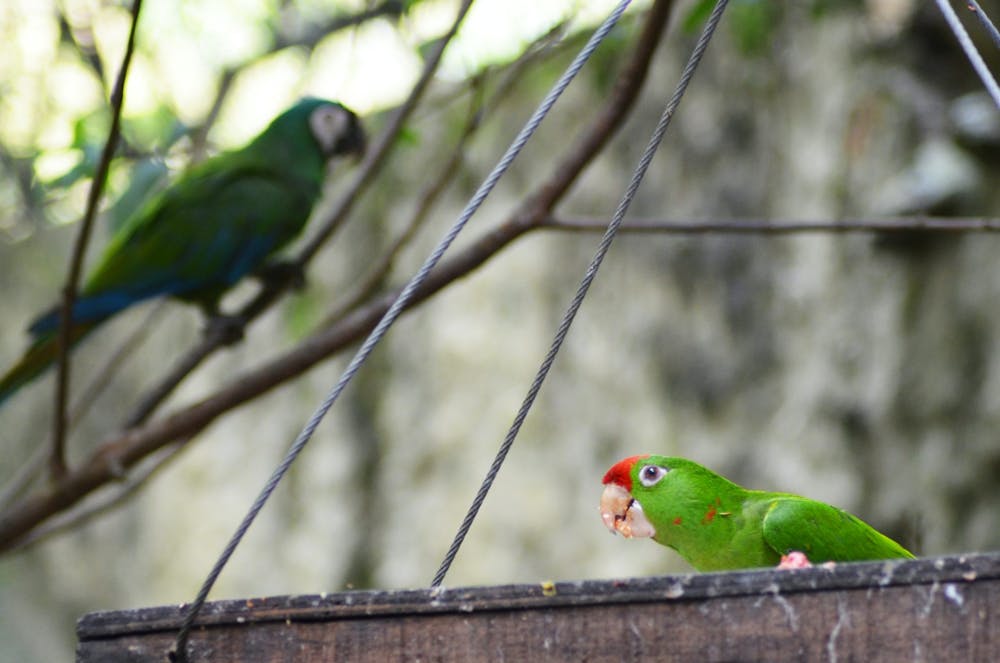
Juan Camilo Guarin P on Unsplash
Puerto Rican Parrot
The colorful Puerto Rican parrot, endemic to the island, is the only native parrot in the U.S. Also known as Iguaca, it’s easily recognized by its bright green plumage, with red and blue accents, and it measures about a foot in length. Unfortunately, this beautiful bird is critically endangered. Once abundant on the island, the parrot has been jeopardized by deforestation, poaching, diseases, and other causes. Conservation efforts to protect this bird began in the 1970s, when only 13 parrots were left.
Thanks to the Puerto Rican Parrot Recovery Program, the population of parrots on the island has grown, with some living in aviaries and others living in the wild, including in El Yunque. Conservation programs like this one are crucial to not only preserving endangered species but also their habitats. It’s rare to see a Puerto Rican parrot on a tour, which makes a sighting all the more special.
Amphibians
Coquí
You may already be familiar with Puerto Rico’s unofficial mascot, the coquí. These tiny frogs are native to Puerto Rico’s main island, Vieques, and Culebra. Today, you can also find them in the U.S. Virgin Islands, Hawaii, and the Dominican Republic. The coquí gets its name from its distinctive call, which fills the island at night when they climb trees in search of insects.
You can fit one of these little frogs on your fingertip. They average between 1.3 and 1.6 inches in length. There are many different varieties of coquí, including common, mottled, whistling, wrinkled, dwarf, and locust. They vary in color and size, but you can recognize them by their call. You can find these frogs in a variety of habitats around the island.
On a hike in El Yunque, you can spot coquís under leaf litter near the trails.
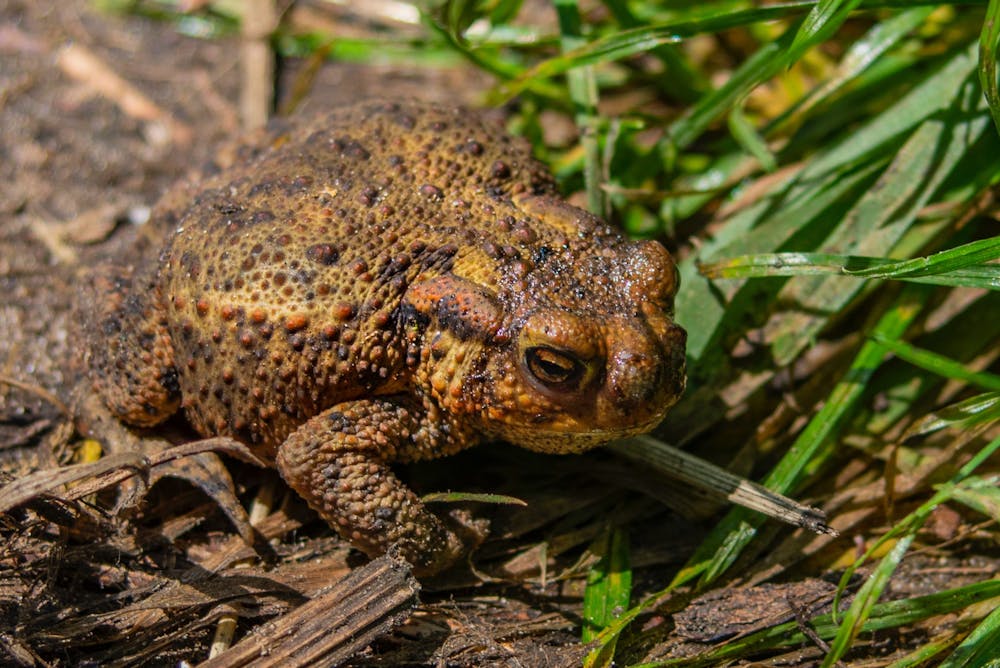
Lucas van Oort on Unsplash
Giant Toad
Not quite as cute as the small coquí, Puerto Rico’s giant toads can get up to 6.8 inches in length. Not endemic to the island, tropical giant toads were introduced to sugar cane plantations to help control beetle pests. You can now find them near still or slow-moving water.
These toads have brown skin covered in warts, and they possess a bufotoxin that they can expel when confronted by predators. You’re probably not looking forward to seeing one of these on the trails, but you can often find them on El Portal Nature Trail.
Reptiles
Puerto Rican Boa
The largest native species of snake on the island, the Puerto Rican boa averages around 6 to 7 feet in length, though larger ones have been reported. They’re known locally as “culebrón” due to their size. Their tan to dark brown coloring makes them difficult to spot.
These snakes feed on lizards, birds, rats, mice, and bats, swallowing them whole. Like other boa constrictors, these snakes are not venomous, instead using their powerful bodies to asphyxiate their prey.
Puerto Rican boas typically spend their time in trees, though they can swim and slither on the ground. They often hang from branches or rock ledges to capture bats. While they’re impressive in size, they’re hunted and eaten by mongooses (more on them below). It’s quite rare to see these boas as you explore El Yunque, but you can sometimes spot them near Yokahú Tower.
Emerald Anole
The emerald anole is one of the 11 species of anolis lizards that can be found in Puerto Rico. This small (2.75 inches), bright green lizard can be found perched on bamboo stems and palm trunks, mainly in the Luquillo mountains and along the Cordillera Central. Emerald anoles have a yellow and brown dewlap (a flap of skin beneath the jaw or neck) that they extend when defending their territory. They can change their color from green to very dark brown when excited.
You can see emerald anoles and other lizard species along the trails in El Yunque. Keep your eyes on the bamboo and palm trees near the Yokahú Tower.
Mammals
Bats
Bats are the only native land mammals that survive in Puerto Rico today. Many of the species found on the island are endemic to the Greater Antilles, and most of Puerto Rico’s bats live in caves. The island’s bat species mainly feed on insects, fruits, and nectar. The local species include:
- Antillean fruit bat
- Antillean ghost-faced bat
- Big brown bat
- Brazilian free-tailed bat
- Greater Antillean long-tongued bat
- Red bat
- Red fig-eating at
- Sooty mustached bat
- Velvety free-tailed bat
Most of these bats are nocturnal, so you typically won’t see them on your hike unless you’re taking a guided nighttime trail walk. If you get to the rainforest early, you might catch a glimpse of the Greater Antillean long-tongued bat at lower elevations. Jamaican fruit-eating bats venture out in the late afternoon, when you could spot them feeding near tabonuco trees, the Palo Colorado forest, and in the cloud forest area at El Yunque Peak.
Small Indian Mongoose
Brought to Puerto Rico in 1877, the small Indian mongoose is a small mammal that resembles a weasel with its slender body and long tail. They can weigh up to 30 pounds at their largest, and their coloring is grayish brown. An opportunistic feeder, it eats insects, snakes, frogs, birds, small mammals, and fruits. Its eating habits can pose a danger to endemic species.
The mongoose tends to find shelter in hollow logs or underground dens. In El Yunque, you can spot them along trails and even in the parking lot near Yokahú Tower and the Palo Colorado Information Center. If you do see one, keep your distance. Mongooses can be infected with rabies.
This is just a small taste of the wildlife you can encounter as you explore El Yunque. The rainforest is full of many other birds, reptiles, and invertebrates such as giant tree snails (you’ll likely see these on tree trunks), flannel moths, Puerto Rican tarantulas, and so much more. To learn about all the animals you see on your hike, it’s ideal to explore El Yunque with an experienced tour guide. Check out our El Yunque tours to book your adventure.
